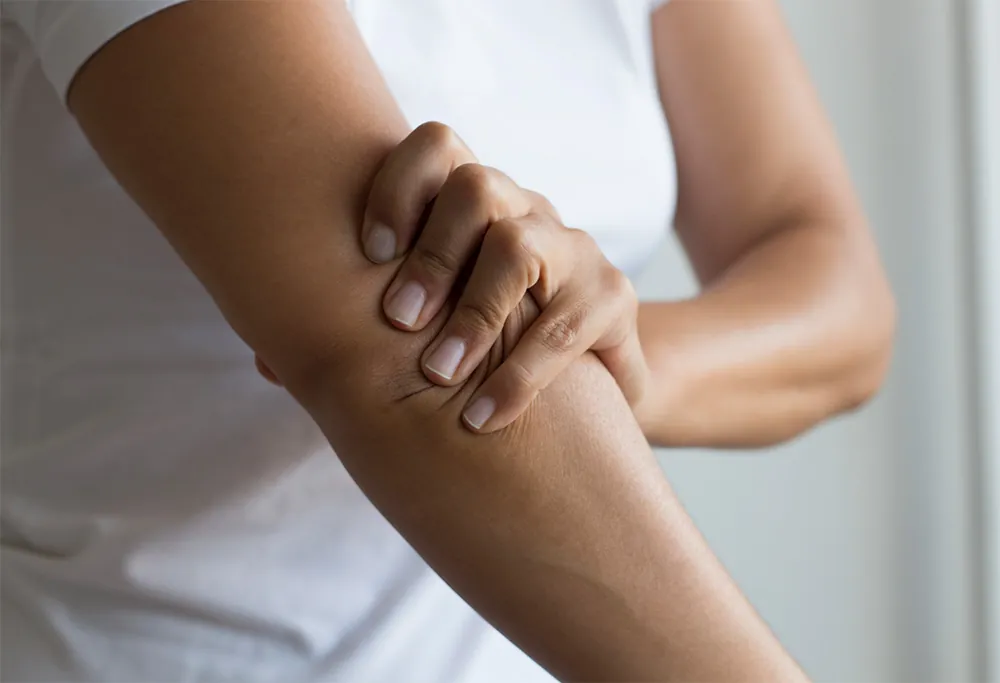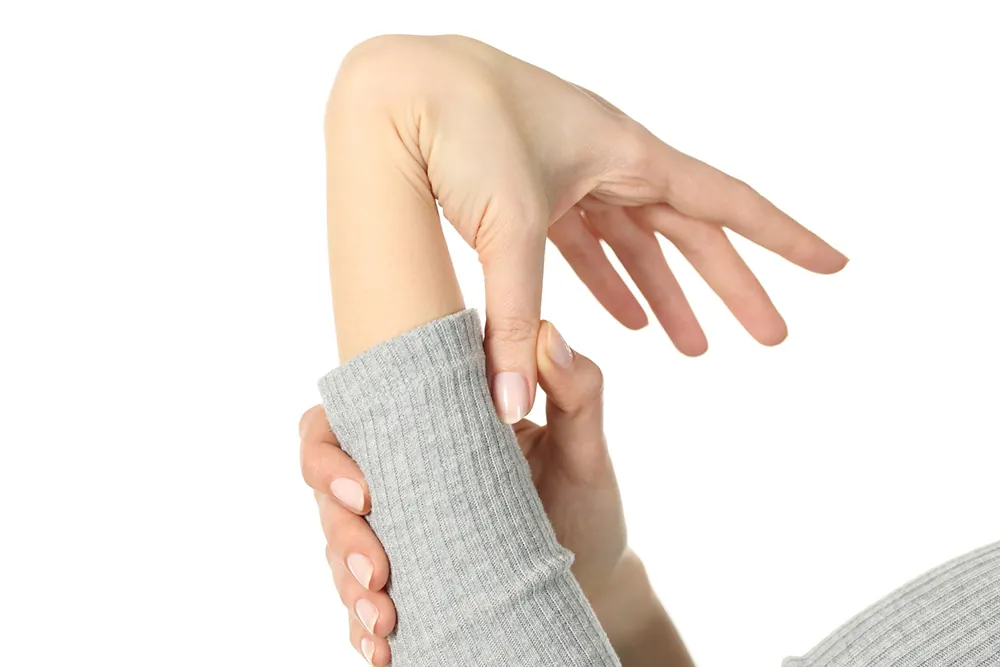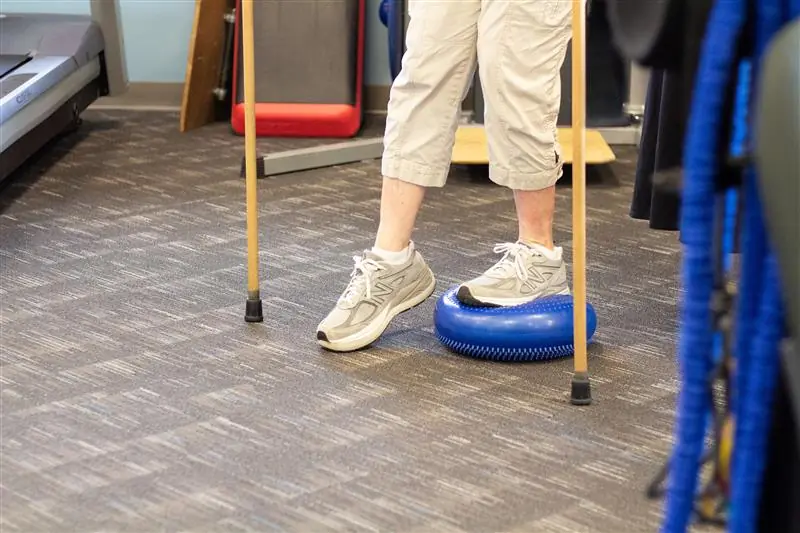Ehlers-Danlos Syndrome (EDS) is a group of inherited chronic conditions that affect the body’s connective tissues. Connective tissues affected by EDS are the skin, ligaments, tendons, and blood vessels. People with EDS experience problems with information about the structures of their connective tissues. There are various types of EDS; as of 2017, they had been classified into 13 types with different impacts on the patients. While most symptoms of EDS are always mild and unnoticed, for some individuals, the symptoms are intense and even life-threatening in some cases. According to the National Health Service (NHS), Ehlers-Danlos Syndrome (EDS) occurs in 1 in 5000 and 1 to 250000 births annually.

What are the Common Symptoms of Ehlers-Danlos Syndrome?
Ehlers-Danlos Syndrome (EDS) symptoms range from mild to life-threatening and life-changing symptoms depending on the EDS type. Mild forms of EDS are easily diagnosed in early adulthood, as it takes time before the symptoms become noticeable. On the other hand, severe forms of EDS are diagnosed in adulthood as the symptoms are easily noticeable. Despite there being very many types of EDS, below are the common symptoms that a person suffering from EDS is likely to experience:
- Joint Changes – the joints have a greater degree of movement and are often loose and double-jointed, otherwise known as hypermobility. Due to hypermobility, dislocations may easily occur, and people with EDS can put the joints back into their place without a struggle.
- Stretchy skin – the skin is stretchy and feels so soft. People with EDS that affects the skin always have splits and bruises easily, and such injuries take time to heal. There is also the occurrence of mobile lumps under the skin, particularly around the knees and elbows. In Vascular EDS, the skin may not necessarily be stretchy but might be slightly transparent, exposing the blood vessels underneath the skin.
- Muscles and Skeleton – people with EDS have floppier muscles that are less strong than those without EDS. Such individuals may experience difficulty with working due to balance problems. Poor grip and difficulty are common problems for people with EDS, who may also experience the curvature of the spine (scoliosis). In severe cases, people experiencing these symptoms might need the help of a stick or wheelchair to move around.
- Exhaustion and Sleep Disorders – people with EDS get dizzy and tired easily, engaging in physical activity even if it is not intense. They also experience sleep disorders occasionally, making EDS mistaken for Chronic Fatigue Syndrome or fibromyalgia.
- Pain – people with EDS often feel pain in their limbs which can worsen after engaging in physical exercises. They may also experience frequent headaches despite not engaging in any intense activity.
- Mood – people with EDS experience anxiety, panic disorders, and mild depression on various occasions than people without EDS.
- Heart Issues – uncomfortable palpitations (thudding of the heart) and extra beats are common symptoms of EDS. Some people with EDS may feel dizziness and a fast pulse rate when standing up quickly. Older people may develop murmurs of their heartbeat.
- Lungs – especially for those with hypermobility EDS (hEDS), may develop asthma-like symptoms.
- Digestive System – diverticulosis, hiatus hernia, irritable bowel syndrome, and constipation are common symptoms of EDS. Prolapse of the bowl is quite common in people with EDS, while bowl rapture occurs on rare occasions.
- Eyes, Ears, and Teeth – rare types affect the eyes, gums, and teeth. In the case of the eyes, the areas around the pupils tend to be blue rather than white, and the eyeballs are very fragile than usual.
- Children’s issues – a delay in crawling, walking, or talking may indicate EDS. EDS can affect growth and cause joint dislocations resulting in such delays.
- In women, EDS occasionally causes prolapse of the womb though it is a common condition among women who have not had children.

How is Ehlers-Danlos Syndrome Diagnosed?
The typical symptoms of one type of EDS can be a suspect, which may prompt the doctor to ask if any family member has joint or skin problems. Once the condition is suspected, the physician will conduct genetic testing to ascertain the type of EDS one might suffer from. However, hypermobility has no genetic testing, and its diagnosis is made by discovering a very specific set of symptoms.
What are the Treatments for EDS?
Since there is no cure for this condition, treatments mainly aim to protect the skin and joints from further damage and manage other symptoms that might arise. The following are the treatment options a physician might advise for their patients:
- Regular physiotherapy sessions to build strength and balance in the joints and muscles.
- Cognitive-behavioral therapy (CBT) for people living with this condition is advisable.
- Anti-inflammatory tablets and analgesics to control the pain
- Use of ascorbic acid to reduce bruising.

Find a ProActive Therapist Today.
EDS is a chronic condition that affects connective tissues, especially the skin and joints, and can severely impact your life. While there is no known cure for EDS, treatments like CBT and physiotherapy can help you manage the symptoms. Contact Us today if you have the symptoms highlighted above.



